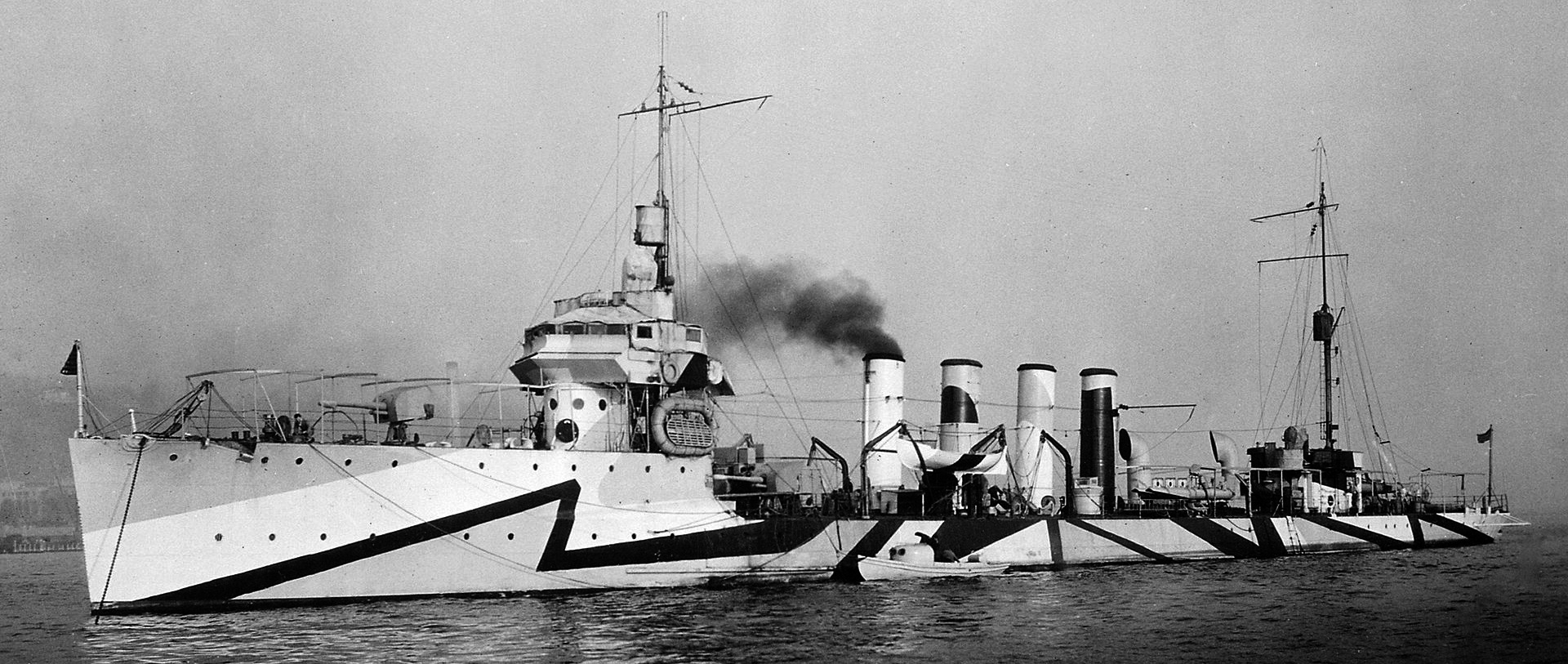
 USN Fleet Destroyers:
USN Fleet Destroyers:Paulding, Drayton, Roe*, Terry, Perkins, Sterett, McCall, Burrows, Warrington, Mayrant (Paulding class, Roe sub-class)
Monaghan, Trippe, Walke, Ammen, Patterson, Sons, Fanning, Jarvis, Henley, Beale, Jouett, Jenkins (Monaghan class)
The first USN oil-fired Turbines Destroyers
The Smith and Paulding were closely similar fleet destroyers sharing similar caracteristics and steam turbines. When the 1000-tonners entered service a few years after they were retroactively nicknamed the “flivvers” in reference to the Ford T. The Paulding-class closely derived from the Smith class, but with torpedo tubes increased from three to six, thanks to new twin mounts which were not heavier than the former single mount. This was such a tour de force that he Smith class were upgraded that way in WWI. They were also the first US destroyers actually solely fitted with oil-fired boilers. These 21 ships were also the first “mass production” of any destroyer in US history. They doubled the US destroyer park close to WWI.
All spent their short WWI career as convoy escorts in the atlantic, with a few U-boats attacks to their credit. The Pauldings on their side were commissioned in 1910–1912 and then reactrivated in 1917-1919 speing the last years in the Atlantic. They were equipped with two depth charge racks to be more efficient in their ASW patrol duties. After V-Day, 12 were transferred to the United States Coast Guard (USCG) in 1924–30, used for the “Rum Patrol” (prohibition) and scrapped in 1934–35 following the London Naval Treaty. We can only guess what use they would have been given in WW2. Their light hull was difficult to load and upgerade
and their machinery worn out after all this service years.
The Smith-class destroyers were the first ocean-going destroyers driven by steam turbines instead of the VTE (reciprocating engines) and really a departure of the former glorified sea-going torpedo boats that were essentially the previous bainbridge and Truxtun classes. They were ordered in 1898, during the Hispani-Am war and Flusser constituded with Reid a second modified batch, considered as their own-sub-class. USS Flusser in addition was completed first for the whole class, thus some documentation of the time taking the completion date as marker called the Smith the “Fliser class”. She was not the first launched, and thus modern authors sticks to the same convention and call it almost universally the Smith class.
These anyway were a groundbreaking design, which was quicky followed by a new serie of 21 ships, launched over a long gap 1909-1912
Design
Design differences and sub-classes
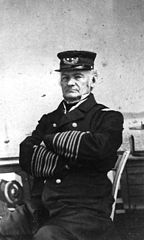 The Paulding class were named after Rear Admiral Hiram Paulding (1797–1878) who served from the War of 1812 until after the Civil War. Like the Smith class, they were subdivided into sub-classes, many depending on authors, which sees details strong enough to make the distintion. For the sake of clarity they are all under one roof here.
The Paulding class were named after Rear Admiral Hiram Paulding (1797–1878) who served from the War of 1812 until after the Civil War. Like the Smith class, they were subdivided into sub-classes, many depending on authors, which sees details strong enough to make the distintion. For the sake of clarity they are all under one roof here.
The 21 ships built had the hull numbers 22 through 42 but sources of the time listed 32 through 42 as the sub-class Monaghan, which featured minor difference. There was also the more obvious (at least externally) 24–28, 30, 31, 33 and 36 as the Roe sub-class, and hulls 32, 35, and 38–42 Monaghan sub-class, distinguished by their funnel configuration (three – Roe, or four – Monaghan and the remainder of the Pauldings).
Jane’s Fighting Ships even had the hulls nubvered 22–42 as “Drayton class” even officially named “Flivver Type” USS Paulding not being the class leader. It should be said class naming conventions changed over time. It’s even worthy of a full video in the future: Indeed, in European navies a class is named after the first ship commissioned while in the US it was more related to the launch. It it settled today as the launch date is now a widely adopted international convention.
On Conway’s all the world’s fighting ships, a clear distinction is made also between the Paulding and Monaghan.
Paulding class
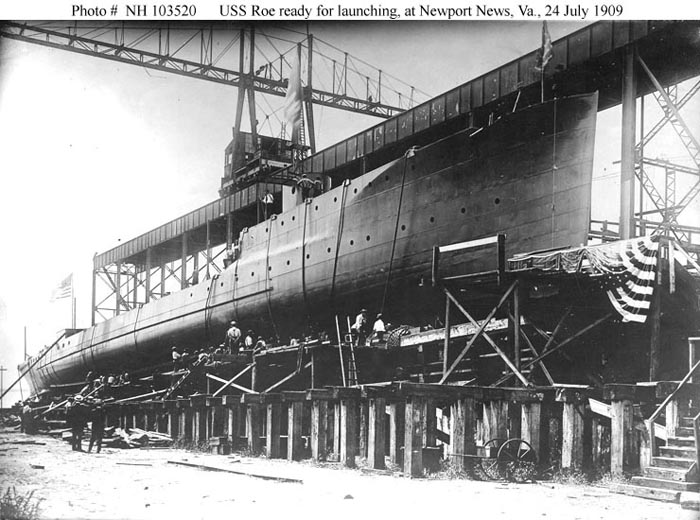
The launch of USS Roe in 1906
These ten improved Smiths were authorized in May 1910. The main change was the replacement of former single torpedo tube for twin ones. They also introduced oil fuel, and most (not all) had three shafts. DD-26, 27, 30 and 31 indeed had two turbines, Curtiss for the Fore River ships and Zoelly for the Cramp ships. Cruising stages incorporated the main turbines. On the Cramp, Newport News, Fore River ships their two amidships funnels were trunked together (Roe sub-class). USS Mayrant and Henley were refitted with 13,000 shp Westinghouse Turbines in 1915. Ships of the Paulding class: DD-21 to DD-31, USS Paulding, Drayton, Roe, Terry, Perkins, Sterett, McCall, Burrows, Warrington, Mayrant.
Monaghan class
They were “repeat Pauldings” (hence why often assimilated to the latter) authorized in March 1909 for DD-32 to 36 and June 1910 for DD-37 to 42. All but USS Walke (DD-34) had triple screw propellers, and six (DD-32, 34, 37,
9 and 40) had three funnels like the sub-class Roe. The remaining ships from bath Iron Works and NyC Shipbuilding were “four pipers”. Two were active in the Maxican intervention of 1914 and eight served in the coast guard from 1924. Class: DD-32 to 42, USS Monaghan, Trippe, Walke, Ammen, Patterson, Sons, Fanning, Jarvis, Henley, Beale, Jouett, Jenkins.
Design of the class
Hull and general design
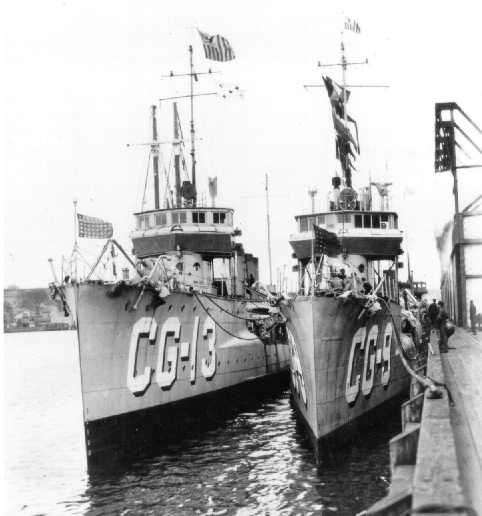
USS Jouett’s bridge design in 1930. It is intersting to show the upgrades of the class over time. They entered service in 1912 with the same barebone bridge platform and flat canvas, then obtained a wave-breaker type structure covered by canvas, then a rigid one, and enclosed bridge with windows added, and shutters for additional protection. This became the standard for USN destroyers until the Wickes/Clemsons.
The very same hull, carefully designed for the Smith class, was also adopted with little changes for the whole Paulding class. The 21 ships only differed in minor accomodation changes and of course their three or four funnels. The artillery was placed the same way as were the torpedo tubes. They had the same profile, with a relatively tall forecastle (compared to the Bainbridges) cutout by two recesses enabling her two forward guns a forward-firing capability. The general deck profile was narrow, with no straight section, but a very elongated, largest amidship hull with very fine entry and exit waterlines.
The superstructure were minimalistic, but inlike the Smith class when built, instead of a crude platform with canvas above the forecastle bridge’s enclosed, rounded map house, there was rigid bridge above, fitted with a massive wavebreaker, doubled for better sealeeping performances, and glassed structure behind, with opening glasses if needed. It was open air though for better visibility. This configuration was retained uninterrupted for the next Cassin, O’Brien, Tucker, Sampson classes. The Caldwell (launched 1917) were the first to introduce both a flish deck and a fully enclosed bridge. The Paulding’s bridge was topped aft by a projector. A second one was located on the quarterdeck house aft, which doubled as a radio room. Two raked masts carried an extansive set of radio cables between them. There was a beam reinforcement bar and anti-colision “bumpers” at the stern. The rudder and propellers, and they shafts were all the same. Only change was from two to three depending on the ships.
Powerplant
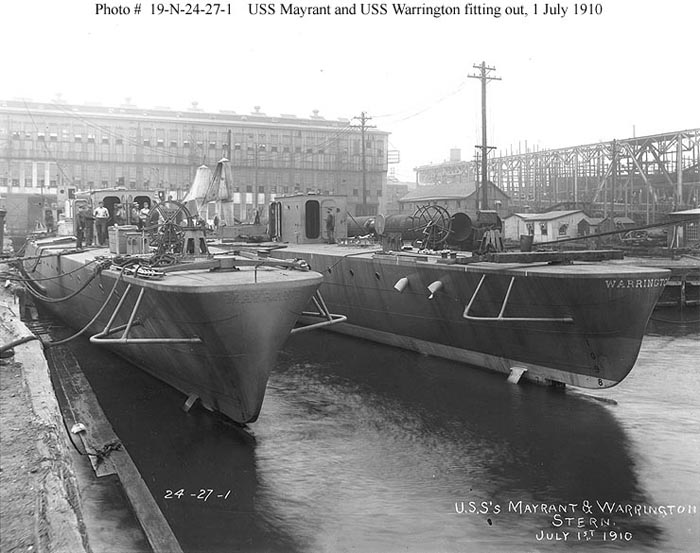
Stern design of the Paulding class. It was inaugurated by the previous Smith class and kept for the Sampsons and following. A very distinctive stern design, in a “vee” from a rounded deck above to a pointy aft section below, close to the rudder. It was discovered that shis shape was not optimal, but many years later.
The Smith and Paulding kept the same machinery room design also, which resulted in four boilers rooms and three turbine rooms, with low and high pressure sets. On the Paulding class though, There was variation in engineering among the class: Hulls 24–27, 30–32, 34, 36, 37, 39, and 40 had three stacks, with the central stack larger to integrate two boiler uptakes trunked. It was of the same width but als long as two funnels.
Most had direct drive turbines arranged as for the Smith class, on three shafts: In that case the high-pressure center turbine exhausted into two low-pressure turbines, mated on the outboard shafts. The latter had cruising turbines to improve fuel economy at low speeds. DD 26–27, 30–31, and DD-34 had two turbines, two shafts with Zoelly or Curtis models and cruising stages included in the turbine casings as well.
But the overriding fact was their main innovation: They were indeed the first USN destroyer class with oil-fired boilers. Compared with the Smith class, the Pauldings had 12,000 shaft horsepower (8,900 kW) instead of 10,000 shp (7,500 kW) and thus were a knot faster. After DD-32 it is noted that Thornycroft boilers were subsituted to Normand ones. Still, the official Data Book for 1911 also included Yarrow and White-Forster models, all small-tubes.
On trials, USS Paulding made 32.8 knots (60.7 km/h; 37.7 mph) based on an output of 17,393 shp (12,970 kW). Peacetime oil capacity was 241 tons which enable some 3,000 nautical miles (5,600 km; 3,500 mi) at 16 knots (30 km/h; 18 mph), comparable to the Smiths, with 2800 nm, but at 10 knots.
Armament
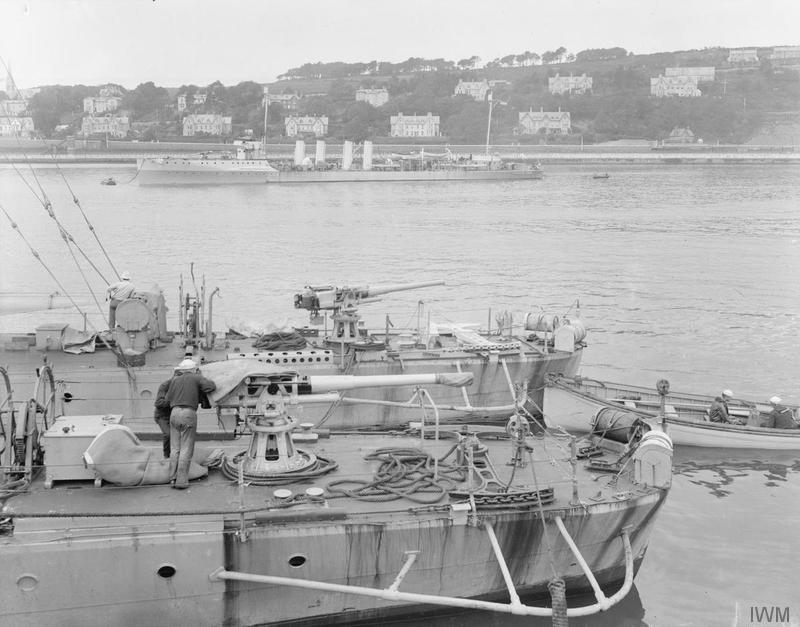
Aft gun, USS Walke.
The main armament was the same between the Pauldings (and Monaghans) and Smith. Choice was made early on to adopt the uniform armament of five 3-in/50 (76 mm) main guns located the same way as for HMS Dreadnought: Three forward in a triangle (one on the forcastle, two on either side under recesses) and two after in line. However the torpedo armament was the main selling point of the new class with no less than six 18-inch (450 mm) torpedo tubes, in three twin mounts: Two were located on either beam abaft the last funnel (depending of the sub-class) and oen axial aft of the mainmast. This was considered as “an easy upgrade” since the new twin mounts actually weighed less, surprisingly, than the older single mounts. however the catch was that there was no room for reloads. So they kept the same six torpedo capacity, but with the immense advantage of being able to fire all six in a short span, whereas the Smith class had to fire three, then fold back, take some time to reload, and returned for another attack.
When pressed into ASW patrols, they all received one or two depth charge tracks aft (see below).
None was equipped to lay mines however, unlike contemportary ships like the Russian Novik class.
Main
The 3″/50 caliber gun Mark 5 were a 1898 design, soon to be the standard USN light artillery. They were judged superior to the British 3-in Armstrong Elswick. It is likely the Paulding class were upgraded to the Mark 6. They fired a 24 lb (11 kg) complete round at 2,700 ft/s (820 m/s) with medestal mounts which elevates to 15°, and allows 20 rpm in optimal conditions. Max range about 8,000 yards.
Torpedoes
These three twin tubes were located amidships broadide for the first pair, and third aft of the mainmast, close to the helmswhell and aft gun, exactly like on the Smith class, but twin instead of single mounts. And like for the Smith class tt was later realized that this placement was less than ideal: Stern launches above 20 knots caused the torpedo to run erratically due to the stern wave deflection.
The torpedo types fired were most probably the Whitehead 18″ (45 cm) Mark 5. They were the first with three speed settings. Weighting 1,452 lbs. (659 kg) for 204 in (5.182 m) long, they carried a
199 lbs. (90 kg) wet gun-cotton warhead, for 4,000 yds/27 kts or 2,000 yds/36 kts and 1,000 yds/40 knots, powered by a dry heater system (hot running) connected to a four cylinder reciprocating engine. Each was “guided” by a Mark 1 Mod 3 gyro system.
Liveries

USS Patterson in 1916 with her dark gray neutrality patrols livery. She was flagship of her own group, was the first to perform an operational refuelling at sea (RAS) in mid-atlantic, and in 1918 experimented the first US hunter-killer group leading a flotilla of 110 ft SC-chasers.

USS Roe in 1918, Roe sub-class

USS Fanning (DD-37) in 1918, alternative ‘four-piper’ variant of the Paulding class.

USS MacCall as CG-14, USGC service, special patrol force based in Charleston, “rum patrol”, 1929.
⚙ Paulding class specifications |
|
| Displacement | 742 long tons normal, 887 long tons fully loaded |
| Dimensions | 293 ft x 26 ft 3 in x 8 ft (89.6 x 8 x 2.44 m) |
| Propulsion | 3 shafts DD Steam Turbines, 4 oil-fired boilers 12,000 shp (8,900 kW) |
| Speed | 29.5 kn (54.6 km/h; 33.9 mph) |
| Range | 241 long tons coal, 3,000 nmi (5,600 km; 3,500 mi) at 16 kn |
| Armament | 5x 3 in (76 mm)/50, 3×2 18 inch (450 mm) TTs |
| Crew | 4 officers + 82 enlisted (86) |
General Assessment
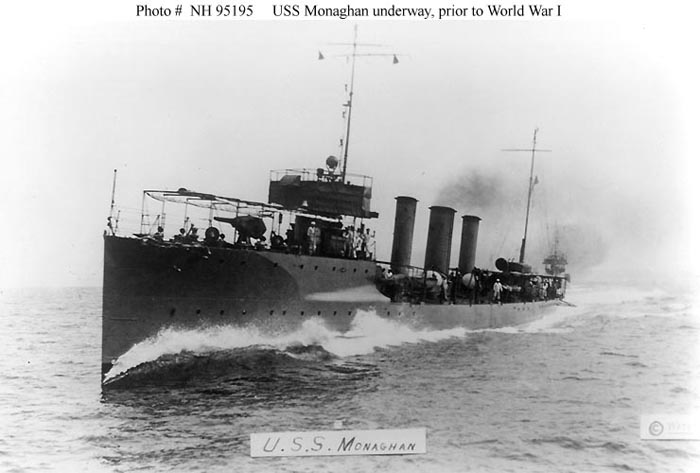
Design wise, this class was a repeat of the previous Smith, with major improvements like the twin torpedo tubes which both improved the weight of an attack while avoiding the complicated, long and dangerous reload; They were also fitted with oil-fuel boilers for the first time while keeping the exact same hull and it’s assoviated performances.
All in all, the 21 ships built gave a rapid expansion in quality and quantity to the Navy, a good complement to the dreadnoughts built at the time. With the arrival of the 1000 tonners later, they were retroactively seen as not impressive, but necessary to achieve considerable incremental improvement to US Destroyer design, up to the revolutionary Caldwell class which completely reset the counter. Their gun armament in particular was only defensive and weak in 1914, rapid upgrades having the 120 mm (4.5 in) caliber adopted.
Career-wise, they proved to have enough legs to cross the Atlantic and perform mid-atlantic escorts and ASW patrols around the Britis isles and France. However success was rare. In their new roles, even if they sighted subs, and attacked, this rarely resulted in a kill. U-Boats submerged fast enough and the ASW used at the time, a 1st generation, were unreliable, short-depht and not very powerful. Acoustic systems were lacking and required calm weather and slow speed to be effective.
Despite their design improvements, these “flivvers” were still considered wet, noisy, shaky, and sensitive to bad weather. Many had their entire deck flushed clean, but the basic design won’t not evolve much for the next iterations. Interesting experiments were still done though, like USS Patterson (DD-36) which in 1918 operated along the east coast with as a leader for a flotilla of SC boats (coastal submarine-chasers), in the first hunter-killer group. She was the first also to perform a refuelling at sea (RAS), with Nimitz’s USS Naumee posted in mid-atlantic on her way to Europe, instead of going from Newfoundland, the northern route, or Bermuda and the Azores, the southern route.
After a useful, but lackluster service, these destroyers went in 1912-1920 in peacetime reserve. They fate was to have been the scrapyard due to the massive fleet of more capable Clemsons and Wickes if not for the prohibition:
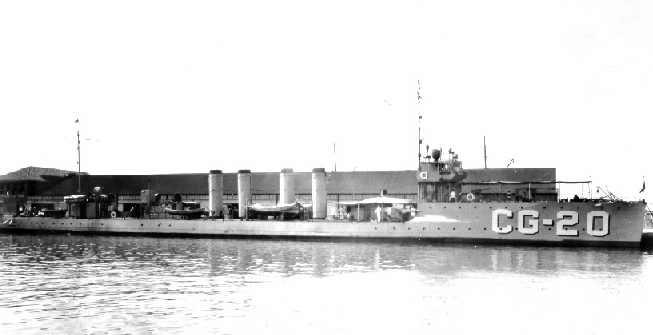
USS Trippe as “rum-runner”. Note the absence of TTs, missing mid-gun (only the stern one remained) and additional structures (notably to house the captured crews and payloads) aft of the funnels. The livery was seemingly light gray, with white on black very large pennants, in “university” fonts.
A thriving traffic developed indeed, smuggling alcoholic beverages, with occult empires created, and a chase developed between authorities, bootleggers, illegal distilleries, and smugglers at sea (in fact in the Great Lakes essentially). Still legal in Canada, an intense cat and mouse game developed to illegally import from there large quantities of alcohol. While carried by sea, the Coast Guard’s small fleet was soon overwhelmed, unable to stop the flow. President Calvin Coolidge proposed to ask the Navy to free twenty destroyers in reserve and with experienced navy crews to beef the USCG’s staffs, boost its capabilities.
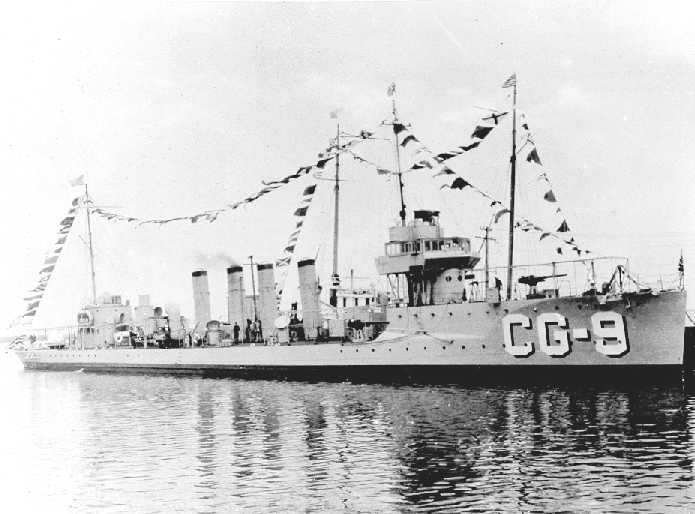
USS Beale as CG-9
The Congress authorized the necessary funds on 2 April 1924. The ships were overhauled and adapted for this service, stripped her the depth charge racks and torpedo tubes, and keeping only four guns. They were not operated by the Navy anymore but placed under loan to the care of the Treasury Department. Many Paulding class served that way. They received large CG- numbers on their hull, retaining their former navy pennant number. USCG captained were hired and assigned to these. The usual service in these lasted about four years. These “rum patrols” (an answer to the “rum-runners”, fast speedboats which left the usual USCG coaster or cutter behind) saw these destroyers quite useful, being both fast and impressive for the task. They operated along the northeastern coast out of New London wuite often (Connecticut). Due to their general state they rarely saw service beyond 1931, so none saw the end of the Prohibition. When returned to the USN, they were quickly discarded and sold, in 1934 for most. The date was not an administrative calendar event but rather an obligation resulting of the London treaty.
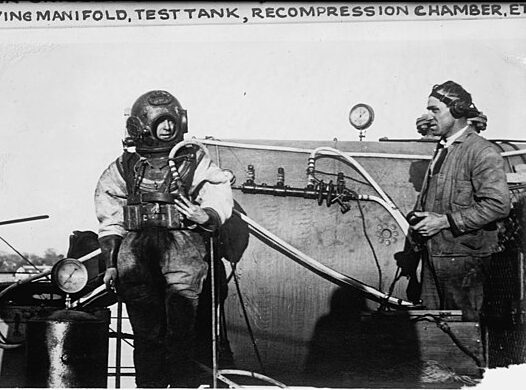
Diving tests from USS Walke, date unknown.
Read More
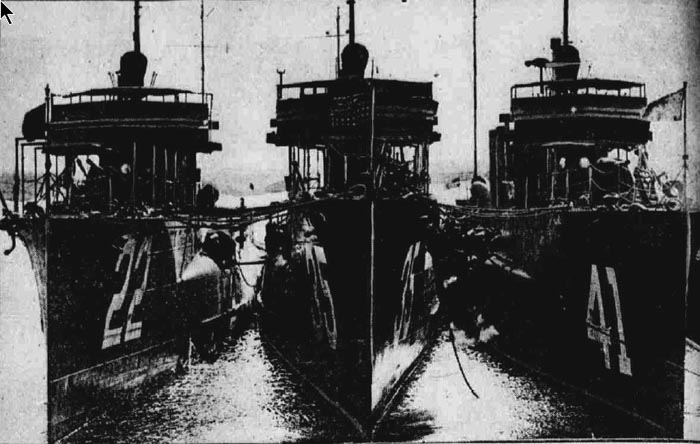
Paulding, Jouett and Ammen in 1917
Books
Bauer, K. Jack; Roberts, Stephen S. (1991). Register of Ships of the USN, 1775–1990: Major Combatants. Greenwood Press.
Friedman, Norman (2004). US Destroyers: An Illustrated Design History (Revised ed.). NIP
Gardiner, Robert; Gray, Randal (1985). Conway’s All the World’s Fighting Ships 1906–1921
Silverstone, Paul H. (1970). U.S. Warships of World War I. London: Ian Allan.
Links
www.destroyers.org/tcs-ships/early-destroyer-history
destroyerhistory.org/early/smithclass
destroyerhistory.org/early/flivvers
navsource.org
navweaps.com/Weapons/WNUS_3-50_mk2
navweaps.com/Weapons/WTUS_PreWWII
destroyerhistory.org/early/ussfanning
historyofwar.org
wiki Paulding-class_destroyer
additional photos (nasvource):
USS Paulding
USS Drayton
USS Roe
USS Terry
USS Perkins
US Steretts
USS McCall
USS Burrows
USS Warrington
USS Mayrant
USS Monaghan
USS Trippe
USS Walke
USS Ammen
USS Patterson
USS Fanning
USS Jarvis
USS Henley
USS Beale
USS Jouett
USS Jenkins
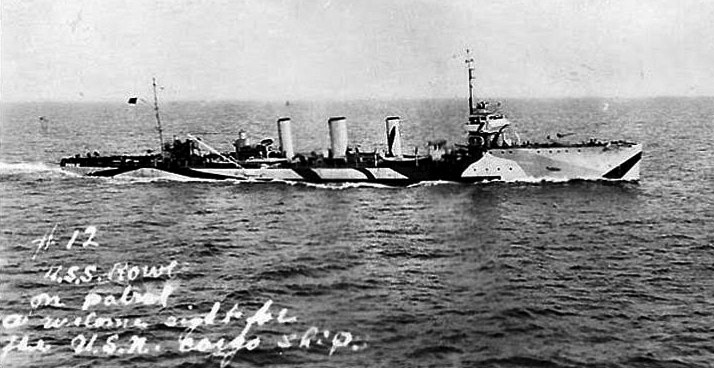
USS Roe in 1918
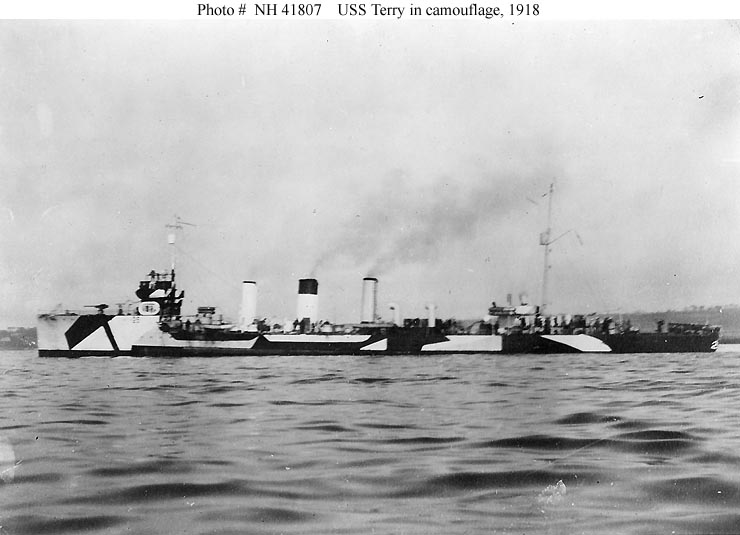
USS Terry camouflaged in 1918
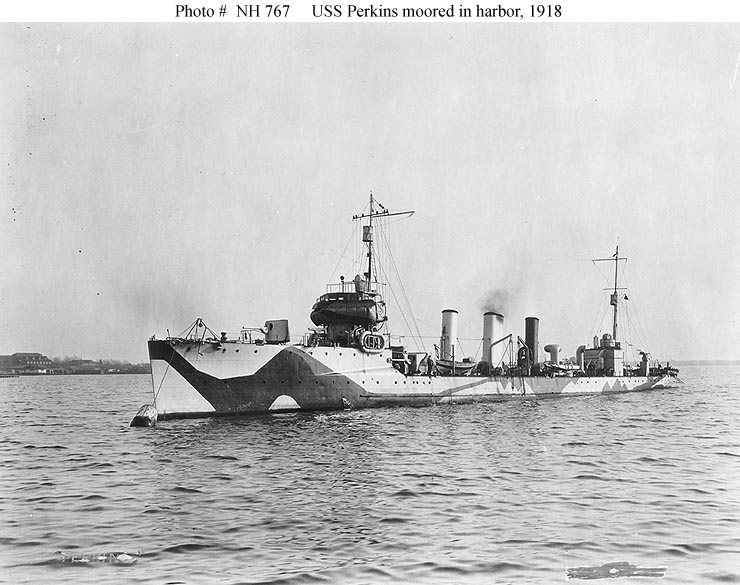
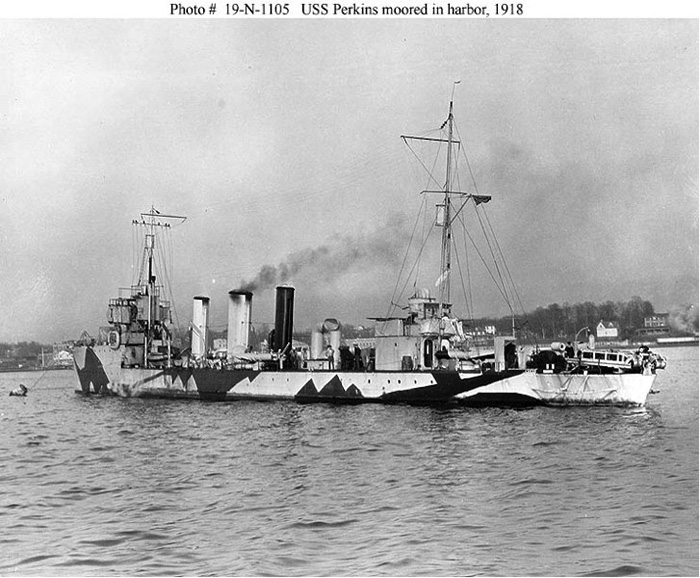
USS Perkins in 1918
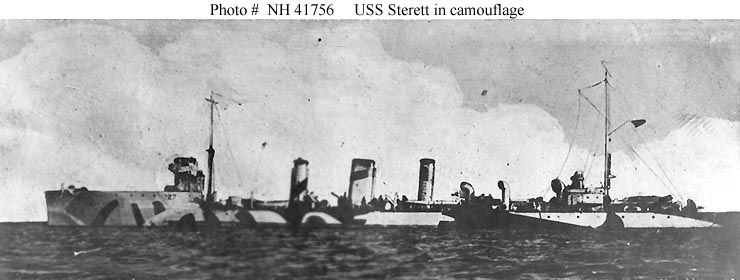
USS Sterett, camouflaged
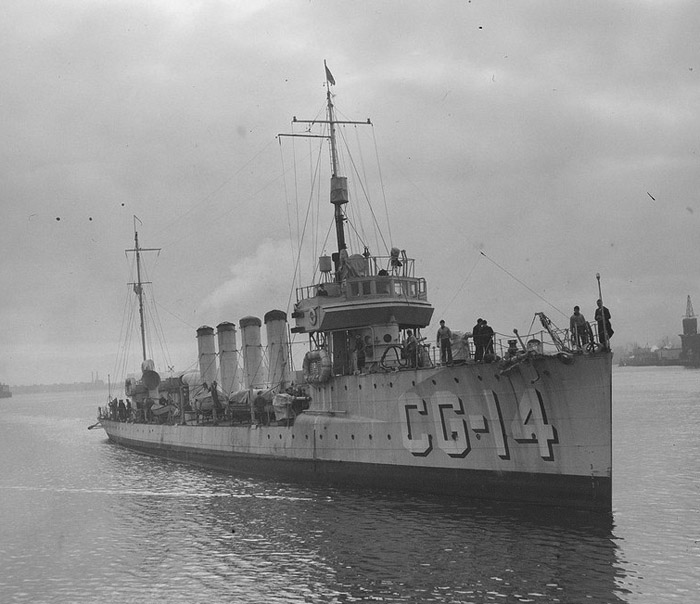
USS Mc Call as Coast Guard Cutter (CGC) for Rum Patrols during the prohobition
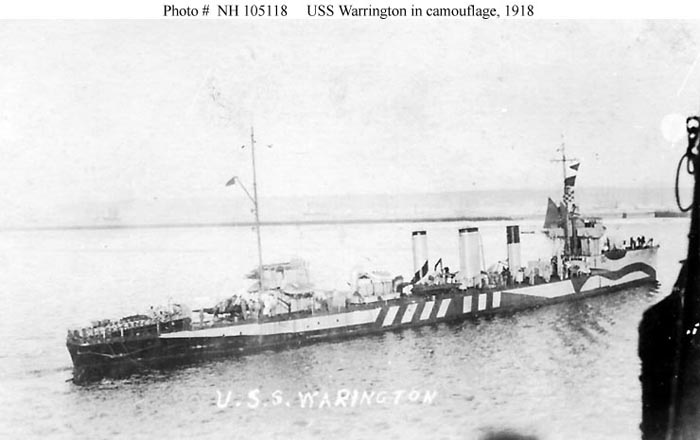
USS Warrington in Brest, 1918

USS Monaghan in sea trials
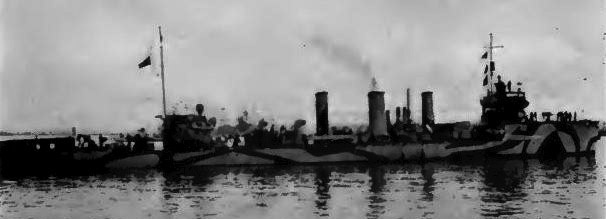
Camouflage of USS Monaghan in 1918
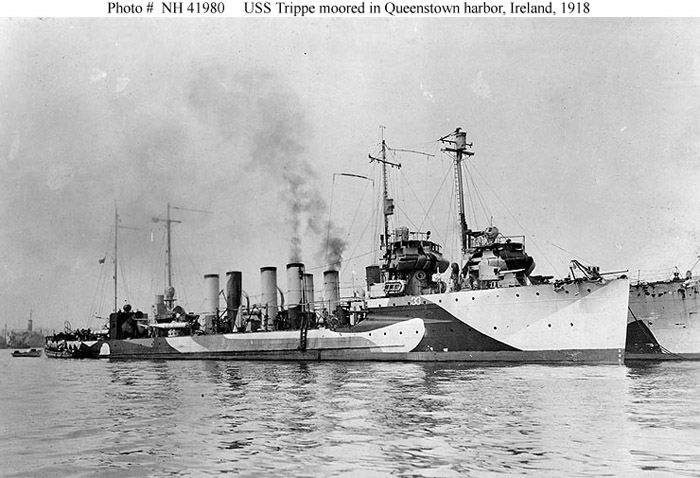
USS Trippe in 1918
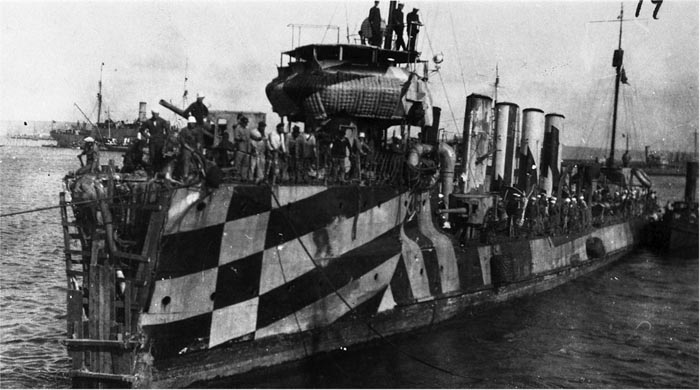
USS Jarvis in 1918
Model Kits
-Combrig Models 1/700 Scale USS Walke (DD-34) Paulding-class Destroyer
-1/350 Iron Shipwrights USS Paulding DD-23
That’s about it as far as i’m aware.
 Paulding DD-22
Paulding DD-22

USS Paulding was laid down at Bath Iron Works, Bath, Maine on 24 July 1909 and launched on 12 April 1910. Commissioned on 29 September 1910 with Lieutenant Commander Yates Stirling, Jr. in command, USS Paulding was the first oil-fueled US Destroyer. She started her career at the Atlantic Torpedo Fleet off the east coast but from April 1917, she patrolled off New England. By 21 May, she left for Queenstown in Ireland as a new home port to escort inbound and outbound convoys. During these two years she had sightings, made at least a few attacks but no kills. After the Armistice she was back home, decommissioned in August 1919, Reserve Fleet. She was reactivated from 28 April 1924 and util 18 October 1930 like many of her sisters, was loaned to the United States Coast Guard as part of the “Rum Patrol”, from Boston.
She tried to located and rescue CG-238’s crew during a gale in February 1927 off Cape Cod and stayed there for two days searching for survivors, taking a beating. In fact her superstructures, intakes and funnels were torn off while all deck equipment was flushed out. Back in repairs, she was barely back in service when on 17 December 1927, she accidentally rammed and sank USS S-4 while S-4 while she was surfacing. The subsequent inquiry did not established convictions. Back to the USN 18 October 1930, before the end of the prohibition (1933) she was versed into the Reserve Fleet, laid up at League Island, stricken on 28 June 1934 under the London Naval Treaty.
 Drayton DD-23
Drayton DD-23
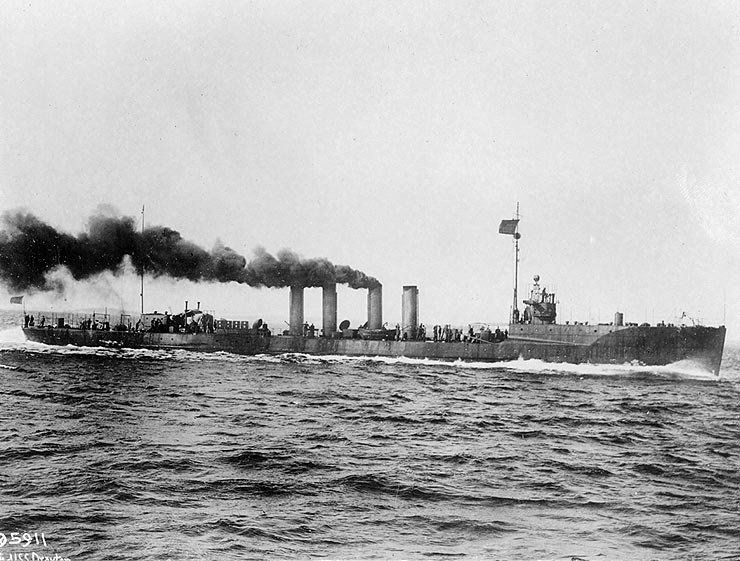
Laid down at Bath Iron Works on 19 August 1909, launched 22 August 1910, commissioned on 29 October 1910 and at first based in Key West, Florida from 21 December 1910 making her shakedown cruise in Cuban waters, east coast, taking part in this year’s fleet problem. She left on 9 April 1914 to blockade the coat of Mexico, rescuing refugees during the revolution. She served from York in June and Newport by August. In 1914 she started a cycle of neutrality patrols, torpedo and gunnery drills, still off Rhode Island. She was back in FL by April 1917, and captured the German merchantman Frieda Leonhardt. She was reassigned to Norfolk on the 12th, and served wit hthe Patrol Force into May, then had a quick refit at Boston.
On 21 May she sailed across the Atlantic for Queenstown in Ireland by June and from there spent mounts patrolling the coast of Ireland and escorting convoys. On 20 June, she chased the U-Boat that torpedoed USS Head, rescuing 42 survivors. Until 4 July, she escorted convoy to St. Nazaire and assisted French cruisers in search of U-Boats. On 15 Decembe, with USS Benham she rescued survivors of SS Foylemore. Next she operated from Brest from February 1918. On 16 December 1918 was was recalled home, Boston (2 January 1919) overhauled and back into peacetime routine of east coast exercizes until 18 July 1918. In Philadelphia NyD she was ultimately decommissioned on 17 November. Kept in long terme reserve, and only stricken on 1 July 1933, sold for BU on 28 June 1935.
 Roe DD-24
Roe DD-24
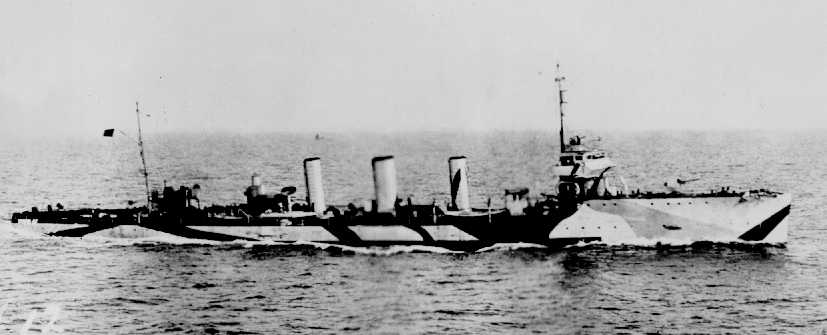
USS Roe was born in Newport News Shipbuilding, Newport News in Virginia, laid down on 19 January 1909, launched 24 July 1909 and commissioned on 17 September 1910. She was a bit of class lead ship, quite different than the others, many being built on the same general design. After exercises off Norfolk and a stop at Newport by 17 December, she took part in winter exercises in the Gulf of Mexico. She stayed in Norfolk as home port until January 1913 and patrolled up to New England sea coast. January–April 1913 saw her in Caribbean exercizes and off New England. She was in reserve in Philadelphia from 3 November and by March 1914, reassigned to the Reserve Torpedo Flotilla, alternating between reserve and active mid-Atlantic seaboard. Frpù February–April 1915 she was on the Caribbean and off southern New England in the summer, then in Charleston in the winter with reduced crew.
From March 1917, she returned in full commission, assigned to Desron 2, DesDiv5, Patrol Force. She helped the Treasury and Labor Department officials at Wilmington, intercepting fleeing German merchant vessels. She sent a party of armed guard aboard Hohenfelde. Under Captain William A. Hodgman her wartime service started from Newport between ASW patrols and escort, for six months and from 9 November set sail for Brest, France until 5 November 1918 when she departed for NyC for a crew leave and upkeep. Next she was moved to Charleston until July 1919. She was decommissioned in Philadelphia on 1 December 1919 in the Reserve Fleet but she was on 17 July 1920 she became DD-24, then fuly activated in 1924 to act with the USGC and Treasury Department from Stapleton, New York (Rum Patrol. Back to the USN League Island barth, she remained there until sold on 2 May 1934.
 Terry DD-25
Terry DD-25
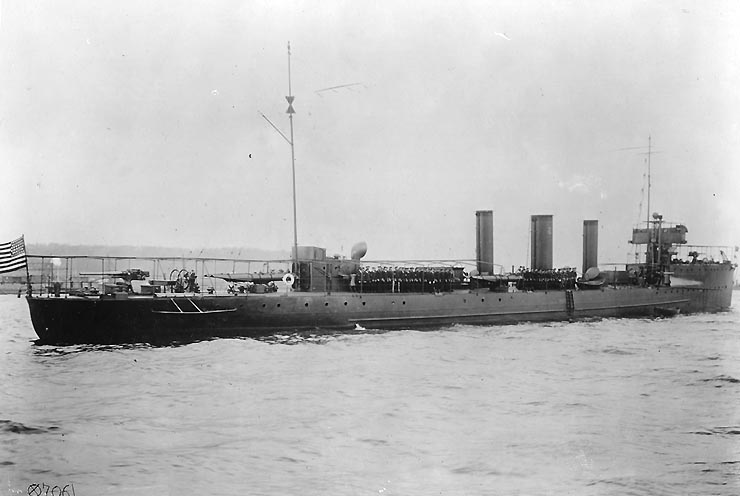
USS Terry was laid down in Newport News Shipbuilding on 8 February 1909, launched 21 August 1909 and completed on 18 October 1910 after which she started her shakedown cruise under command of Lieutenant Commander Martin E. Trench on the east coast. She served on the Atlantic Fleet’s Torpedo Flotilla the first winter and was in drills Cuban waters. After torpedo exercises and maneuvers with the Fleet in 1911 she made her first airplane rescue at sea off Havana. In the spring and summer she trained off the New England coast. By November 1913, she was based in Charleston and overhauled.
Afterwards she entered reserve and in 1914 patrolled the coast of Florida. In February 1915, she was in the Carribean, and trained between Newport and Charleston. From 1 January 1916 she had a reduced crew and on the 31st, went to Key West wuth the fleet, then Santo Domingo. However in June while in the inner harbor of Puerto Plata she ran aground on a reef, settling half-submerged. Terry’s crew joined the staff of the company making the salvage, until USS Terry was refloated on 26 June. After local repairs on 7 July she entered the drydock at Charleston on the 15th.
After her extensive repairs she had a new skipper, Lieutenant John F. Shafroth Jr. uner which she patrolled the Atlantic coast, escorting convoys to Europe. By January 1918 she was based at Queenstown, Ireland. During these escort missiones she never sighted any German U-boat but on 19 March 1918 assisted USS Manley after an accidental depth charge explosion.
By December she was back home. After 11 months, she was decommissioned at Philadelphia Navy Yard on 13 November 1919. Transferred to the Coast Guard on 7 June 1924 and operating from NyC for the “rum patrol” she was ceded back to the USN by October 1930, decommissioned and sold on 2 May 1934, stricken on 28 June 1934.
 Perkins DD-26
Perkins DD-26
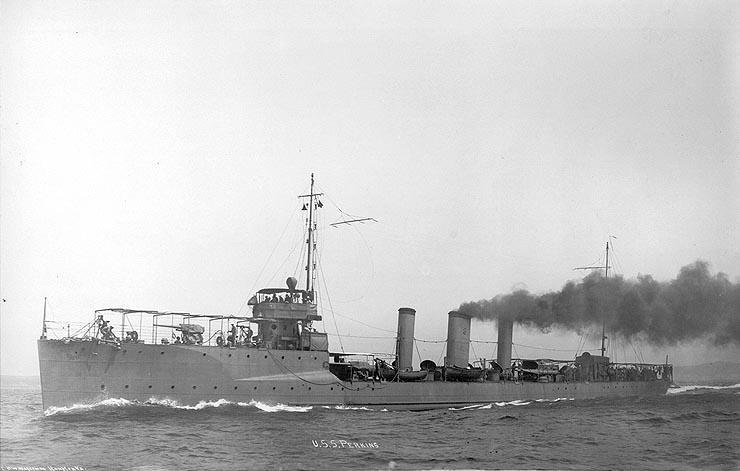
Built at Fore River Ship and Engine in Quincy, laid down on 22 March 1909 and launched on 9 April 1910, USS Perkins (DD-26) was of the sub-class Roe. Commissioned on 18 November 1910 her first captain was Lt. Cdr Joel R. P. Pringle. Her career resembled much that of her other sisters. She served with active and reserve squadrons, alternatiing between the east coast, New England and the Carribean in winter. She was in reserve in 1913, but fully recommissioned on 3 April 1917 (Captain Lt. Cmdr. Forney Moore Knox), and assigned to the 2nd division in Europe where she served woth USS Paulding, Wilkes, and Ammen, from Queenstown in Ireland, until November 1917.
She rescued survivors of Tarquah on 7 August znf operated from Saint Nazaire to Ireland and New York of Queenstown to Liverpool. After an overhaul in Charleston in 1917–1918. In March-December 1918 she was based in Gravesend Bay, New York. She sighted U-151 off New Jersey on 2 June 1918, but failed to score any hit. She also escorted SS President Grant and President Washington and ventured to Nova Scotia. On 5 December 1919 she was put in reserve, and stricken on 8 March 1935, sold on 28 June.
 Sterett DD-27
Sterett DD-27
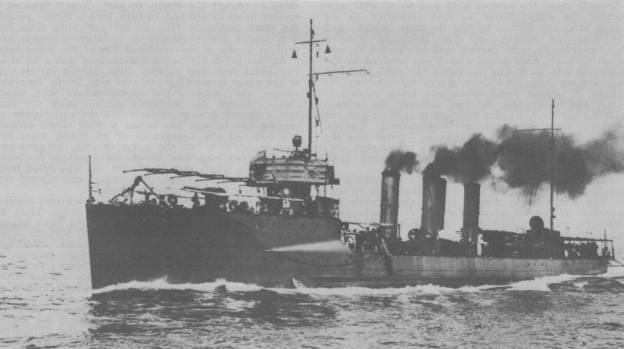
USS Sterett was maid down on 22 March 1909 launched on 12 May 1910 and commissioned 15 December 1910. Until 1913 she operated along the east coast from Boston (April-December) and in the winter from January to April was in the Carribean for exercises off Cuba. In reserve from 5 November 1913, she was in limited service with the torpedo fleet and from 20 January 1914, made a goodwill cruiser with many stops to New Orleans, joining the Reserve Torpedo Flotilla operating in the Gulf of Mexico from Galveston, Texas during the Maxican revolution, patrolling to catch weapons sumugglers and protect US citizen’s interests. In June 1914 she was back to the Atlantic fleet, home port Norfolk. Her crew was reduced again from 5 January 1916 when she served in the Caribbean.
On 1 June 1916 she supported the Marines landing at Monte Cristi in the Dominican Republic, seizing Santiago and restoring order. Back to Norfolk she resumed her peacetime routine but on 1 January 1917, she sailed into the Mississippi for the first time from New Orleans, and up to to Vicksburg, before patrolling Texas waters until based in Key West on 18 March and patrolling the Cuban coast.
On 9 June 1917 she was relocated at Queenstown, Ireland for escort work. She had several other departure ports, like Berehaven in Ireland, and Devonport in England. From there, British and French destroyers made the last leg to final destinations in France.
On 31 May 1918, she spotted a surfaced U-boat, closed to attack when the latter rapidly submerged. She dropped depth charges and soon spotted both bubbles and oil, but no certain kill. She stayed in the vicinity of the trail until batteries and air supply ran out through the night, forcing the wounded sub to emerge at dawn, about 1,000 yd (910 m) ahead of her bow. Ordering top speed her captain tried a ramming, but U-Boat swang hard to port and only had a glancing miss, 20 ft (6.1 m) away. She attempted to dive while USS Sterett’s crew brought her guns to bear but too late as the submersible finally escaped for good. No traces could be found to continue the pursuit and the destroyer folded back to the convoy, later officers and men were given a commendation.
During this time, USS Sterett also helped pioneering airborne surveillance, having a seaplane attached to her, stored on her aft deck and operated when the sea was calm enough. I’ll try to find more info on this.
After the Armistice, USS Sterett returned home in January 1919, to Charleston. She went to Philadelphia to be decommissioned (9 December 1920) and by 9 March 1935 after 15 years of reserve she was stricken and sold on 28 June.
 McCall DD-28
McCall DD-28
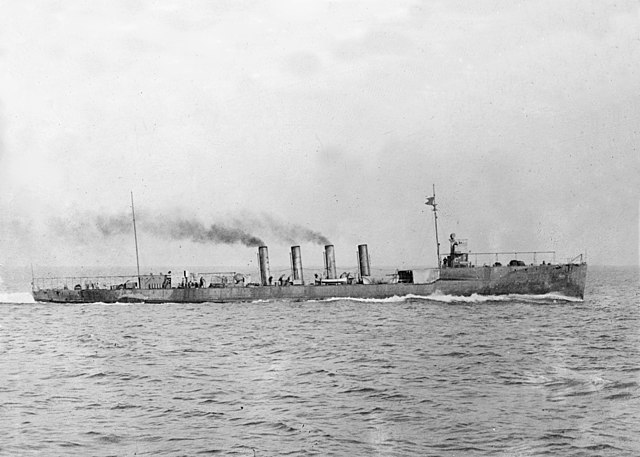
USS McCall was built at New York Shipbuilding in Camden, New Jersey (laid down 8 June 1909, launched 4 June 1910, commissioned 23 January 1911). She served prewar in the the Torpedo Flotilla, Atlantic Fleet, based from Newport in Rhode Island, and a frequent view in the Chesapeake Bay area. Winters were spent in Cuban waters, Guantanamo Bay. In 1916 she started Neutrality Patrols off New York, along New England waters and on 14 June 1917, after an overhaul in Philadelphia she was prepared in New York for her first escort to Europe and it went on this first leg until January 1918, when she was transferred to Queenstown in Ireland on 22 February for closer to action missiones until 16 December. She however never spotted, nor attacked a submarine.
Back home in January 1919, she was decommissioned at Philadelphia on 12 Decembe, placed in reserve until 7 June 1924. She was recommissioned with the USGS on 17 June 1925 after an overhaul and operated from New London in Connecticut for the Rum Patrol. She was decommissioned on 12 August 1930, returned to the USN on 18 October 1930, stricken and sold for scrap 2 May 1934. Full History
 Burrows DD-29
Burrows DD-29
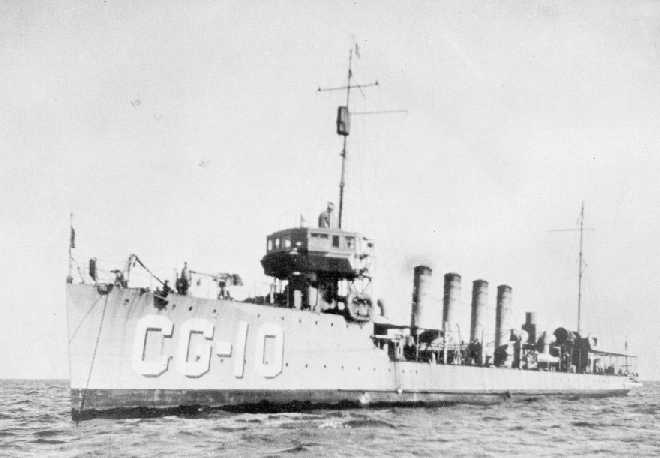
USS Burrows in 1930 as USGS 29, “rum patrol” duties for the treasury, during the prohibition.
USS Burrows was born in New York Shipbuilding, laid down on 19 June 1909, launched on 23 June 1910 and completed on 21 February 1911. Sge was part of the Torpedo Flotilla, Atlantic Fleet alternating seaons between the east coast and Cuban waters. From 1916, Neutrality Patrols from Staten Island and to Long Island, off New York and by April 1917, in Lower Harbor, New York. On 7 April she was assigned Squadron 2, looking for days to find a previously spotted German raider off Nantucket. On 10 April she was refitted for distant service in Philadelphia Navy Yard. By June, she escorted with Group 2, a Transport Force with the first American Expeditionary Force to reach France.
In the Loire River on 27 June 1917 she was reassigned to the south coast of Ireland based on Queenstown. At some point during a hectic mission pace, she had trouble with a broken oil line but the fire was eventually mastered, assisted by four other destroyers. Still she had two sailors which died of their burns. After November 1918 she was based in Brest, France, as part of the escort of President Woodrow Wilson (13 December), from SS George Washington. She was back in Philadelphia on 2 January 1919 after a short service along the eastern seaboard was decommissioned in the Navy Yard, on 12 December 1919. From June 1924, she was reactivated to serve with the Coast Guard from New London, returned on 2 May 1931, stricken and sold for BU.
 Warrington DD-30
Warrington DD-30
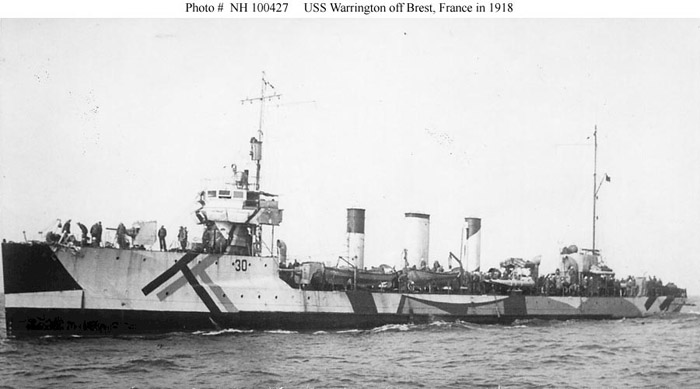
USS Warrington was built at William Cramp & Sons, in Philadelphia, laid down on 21 June 1909, launched on 18 June 1910 and commissioned on 20 March 1911. After fitting out she was assigned on 5 August to the Torpedo Station at Newport, Rhode Island, loading her torpedoes to train with the Atlantic Torpedo Fleet. For the next years she adopted the same routine as the others, with seasonal manoeuvers from Cape Cod to Cuban waters. She served with DesDiv 8 and 9. While off the Virginia capes during the night she crossed the path of a schooner which struck her Warrington aft, slicing off 30 ft (9.1 m) of stern. Her propulsion was knocked out by the impact, and she was left powerless 17 mi (27 km) off Cape Hatteras. USS Sterett came first as Walke and Perkins. Towing failed beofore the revenue cutter Onondaga, which brought her to Norfolk for repairs until 2 December 1912.
In August 1914 she was detached in Bar Harbor, Maine with USRCS Androscoggin to protect entente transfers of gold and silver, and watch over Kronprinzessin Cecilie.
From 6 April 1917, she started neutrality patrols and looked for U-Boats. In Boston by 21 May she was prepared for her European service, sailing via Newfoundland to Queenstown by June. She patrolled the southern approaches and Irish Sea until November 1917, then detached to Brest. She only had a single apparent brush with a U-boat on 31 May 1918 while off the French coast after receiving a distress call from SS President Lincoln, torpedoed by U-90. She rescued 443 before midnight and USS Smith took the rest. The next day, USS Warrington and Smith would catch the submersing and fleeing U-90, which was copiously depth-charged but to no avail. They soon folded back to the convoy with their precious rescapee aboard. For the anecdote, a Lieutenant was captured by U-90 previously, which describe the depht-charging “from inside”, after the war assessing the damage and helping the USN to devise better tactics and heavier charges.
After the armistice of November USS Warrington stayed in European waters until spring 1919 and departed Brest on 22 March, with a convoy of subchasers and tugs, via the Azores and Bermuda, to Philadelphia. She stayed there, decommissioned, at League Island from 31 January 1920 and until 1935. On 20 March she was stricken, sold for BU sold on 28 June.
 Mayrant DD-31
Mayrant DD-31
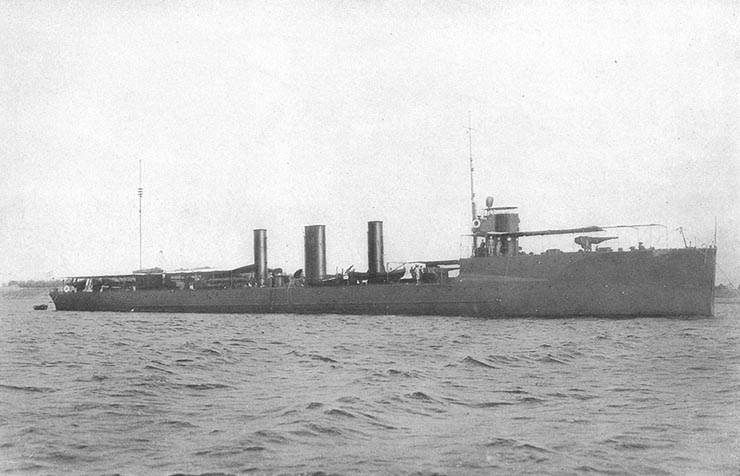
USS Mayrant was the last of the “Paulding class” in many publications, and one of the “thee pipers” variant (sub-class Roe). She emerged from William Cramp & Sons, after being laid down on 22 April 1909, launched 23 April 1910 and completed on 12 July 1911. Her carrer was typical of the class: In short, New England coast operations with the Torpedo Squadron, based from Newport, winter exercizes in Cuban waters, and the same each year in 1912, and 1913, 1914 and 1915 with the Torpedo Flotilla, Atlantic Fleet. She was overhauled that year in Brooklyn Navy Yard, decommissioning on 20 May, bertherd from 9 November in Philadelphia, then fully recommissioned on 2 January 1918.
Her very short service as escort ship along the coast and across the Atlantic went on without notable incident until the Armistice and she received another inactivation overhaul at Charleston, South Carolina after the war, on 21 June 1919. She was decommissioned on 12 December 1919 again, but reactivated on 17 July 1920 in the Reserve Fleet until 1935. On 8 March that year she was stricken and sold for BU on 21 August 1935.
 Monaghan DD-32
Monaghan DD-32
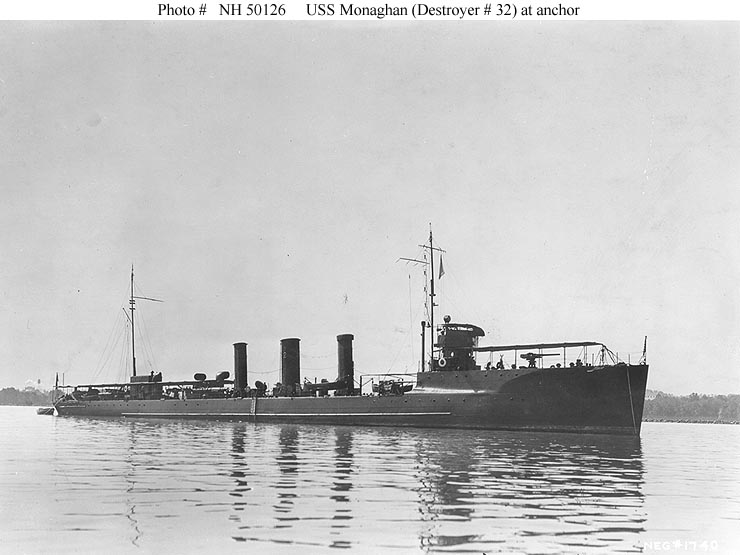
USS Monaghan, often assimilated as a different class, only differed by minor details, but mostly new order dates in march 1909 and June 1910. She was built in Newport News Shipbuilding, launched on 18 February 1911, completed on 21 June. Her first captain was Lieutenant Commander W. P. Cronan. She served with the Atlantic Fleet, taking part in many fleet readiness training and operations between New England and Cuban waters. After 1915-16 neutrality patrols she started her escort service through the mid-Atlantic, still based in the US. From November 1917 this was based in European waters. She was back in the US and decommissioned at Philadelphia on 4 November 1919. Transferred to the Coast Guard on 7 June 1924 she took part in the “Rum Patrol” from New London in the Connecticut and Boston, Massachusetts in 1930. Returned to the USN on 8 May 1931 she was stricken and sold on 22 August 1934.
 Trippe DD-33
Trippe DD-33
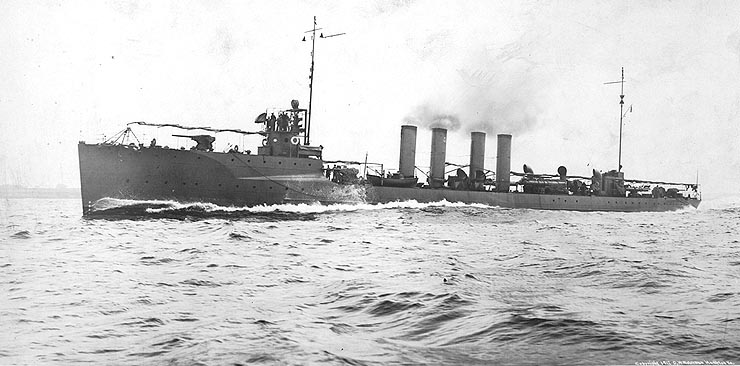
USS Trippe was built by Bath Iron Works, laid down on 12 April 1910, launched 20 December 1910 and completed on 23 March 1911, commissioned under command of Lieutenant Frank D. Berrien.
She served with the torpedo boat destroyers squadrons of the east coast, Atlantic Torpedo Fleet. For three years same routine of summer’s east coast patrols and winter Carribean’s exercizes. In 1914 the Tampico incident had her sent off Mexican shores to support the landings at Veracruz. She was overhauled in Boston afterwards.
The same routine proceeded in 1915 and on 13 December 1915 she was reassigned to the 2nd Reserve Flotilla, then from 5 January 1916, “Destroyer operating with reduced complement” in Boston NyD. This went on until the US went at war.
In full commission on 25 July 1916 she retrained for eight months, on the east coast and was prepared in Boston for overseas deployment. She proceeded from St. John’s, Newfoundland, before reaching Queenstown, southern Irish coast (This leg was the shortest possible to cross the Atlantic for a destroyer, even filled to the brim with oil). She sorties for her first mission on 5 June and focused on convoys from America to France and England. This alternated with patrols around Queenstown. She had one sighting of an U-Boat on 18 September 1917 350 mi (560 km) west of Brest, France. USS Trippe charged and dropped depth charges but missed. Later she was battered by a storm but ended as planned with the convoy in Quiberon Bay, France. After quick repairs she went on in her routine, until late 1918. She left Queenstown via the southern route home, via the Azores and Bermuda, arriving in Boston on 3 January 1919. She was in the Philadelphia NyD on 23 July for preinactivation overhaul and decomm. by November 1919, reserve, until 1924. Reactivated for teh Coast Guard she went on in “rim patrols” from new London in 1929 until returned in 1932, replaced in reserve and stricken, sold in August 1934.
 Walke DD-34
Walke DD-34
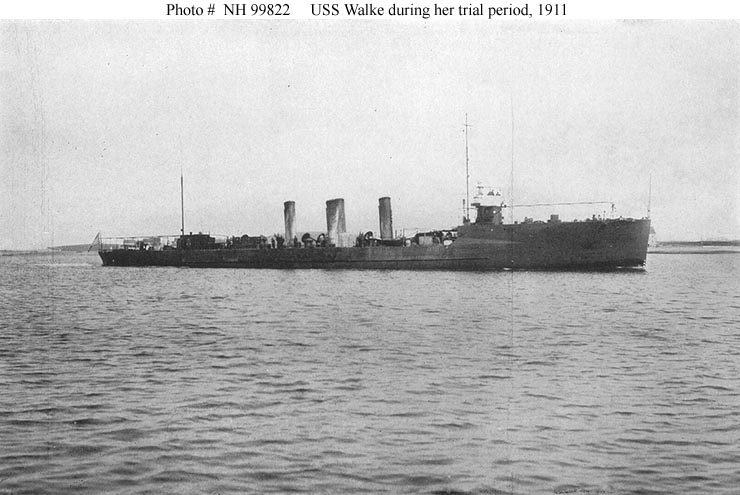
USS Walke was built at Fore River Ship and Engine. She had coal-firing boilers. Laid down on 5 March 1910, she was launched on 3 November 1910 and completed on 22 July 1911, and after initial training and shakedown, assigned to the 9th Division of the Atlantic Torpedo Fleet. She was fitted out in Boston, and moved to the Torpedo Station at Newport in Rhode Island, loading torpedoes for training. She spent the next three years in the usual routine of fleet and torpedo-firing exercises with destroyers and submarines of the torpedo fleet off the east coast in summer and Carribean in winter, from Cape Cod to Cuba.
On 1 November 1913, she was placed in reserve (Ny Navy Yard) for 17 months in semi-retirement with a commanding officer and partial crew. In October-November 1914 she took part in experimental deep sea diving trials, Stephen J. Drelishak’s setting a world record at 274 ft (84 m), in Long Island Sound. In July 1915, fully reactivated, she took part in the Independence Day celebration at Perth Amboy, New Jersey and stopped at Washington, D.C. in September. From November she was overhauled in Charleston NyD, until February 1916 and March, she restarted training. Next she was sent to cover a landing to restore order in the Dominican Republic. In July she was Norfolk for a new eight-month overhaul.
She was ready in March 1917 and based in Staten Island, arriving on 6 April 1917, the day war was declared on Germany. After patrolling off New York she was assigned to Charleston, returned to New York and prepared for European waters. The first days were in tow of the collier USS Jupiter. On 26 May, she arrived in Gironde estuary, France 5 June. From Bordeauw she moved north to Brest, and then Queenstown, Ireland, her new home until 17 November 1917, heading for home. She entered Charleston’s yard in mid-December 1917 and departed in March 1918 for New York, patrolling coastal waters up to Cape Cod and escorted convoys to NyC.
After preacetime Atlantic Fleet exercises in January 1919, via Charleston she joined manoeyvers in the Carribean and back to NyC via Florida. 18 July 1920 she was prepared for inactivation in Philadelphia, decommissioned on 12 December and in reserve until the mid-1930s. Stricken on 20 March 1935, sold for BU on 23 April 1935.
 Ammen DD-35
Ammen DD-35
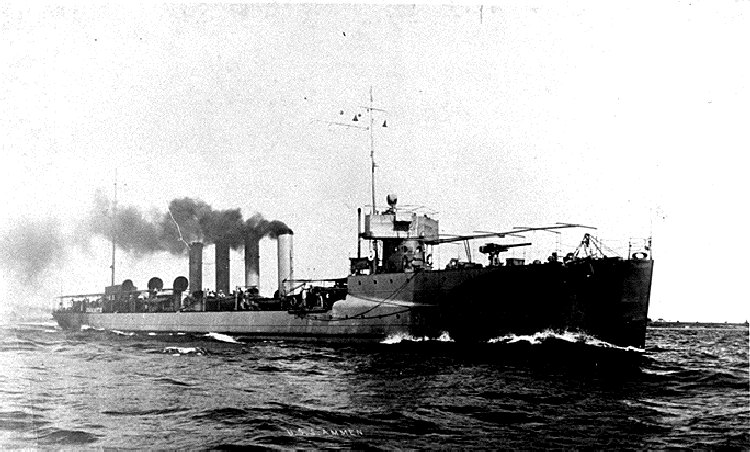
USS Ammen prewar. Note her original bridge platform protected by canvas
USS Ammen (DD-34) was laid down in New York Shipbuilding on 29 March 1910. Launched on 20 September 1910 she was completed on 23 May 1911 at the construction cost of $655,075.13 (hull and machinery). After her commission she was assigned to the Atlantic Fleet, Torpedo Flotilla, east coast. She underwent the other routune as the other destroyers of the class and from 1915, started neutrality patrols and escort on the east coast.
From April 1917, she patrolled off the Bahamas and was fitted out in Philadelphia NyD on 6 May for overseas service, Division 9, sailing on 18 June for St. Nazaire in France with her first convoy on 2 July to Queenstown in Ireland. She never sighted not attack an U-Boat during these two years but assisted many vessels hit. She was back home in January 1919 and cruised on the Gulf of Mexico before deommission at Philadelphia (11 December 1919) until 28 April 1924. Transferred to the Coast Guard as CG-8. USS Ammen took par tin the “rim patrols” until 22 May 1931, returned to the USN and stricken on 5 July 1934, sold for BU.
 Patterson DD-36
Patterson DD-36
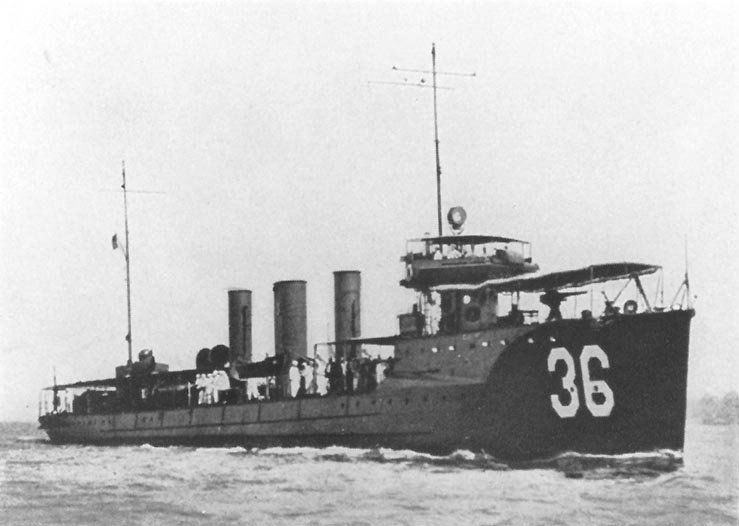
USS Patterson was laid down at William Cramp & Sons on 29 March 1910, launched 29 April 1911 and completed on 11 October 1911. On the 23th she departed for Newport in Rhode Island, and New York City, then Boston, her new homeport. Her are of training was the New England Coast, Virginia Capes, Charleston, Pensacola, and Guantánamo Bay, but also Vera Cruz on 20 May 1914 to support Marines landings there. Affterwards she returned to New England Coast patrols and Newport-Boston approaches, escorting inbound trans-Atlantic convoys. In 1916 she became flagship of the 2nd division and crossed the Atlantic, supported by the oiler Maumee, commanded by a young CO, Lieutenant Chester W. Nimitz. There, she led led DesDiv 5 on 21 May 1917 to Maumee on 28 May and became the first ever USN destroyer performing a refuelling at sea (RAS), and led her pack to Queenstown in Ireland, on 1 June 1917. They were given there British signal books and depth charges racks.
On 12 June, she sighted, chased, and dropped depth charges on the U-boat attacking SS Indian. She collided later with the tug HMS Dreadful in Berehaven Harbour’s entrance on 1 January 1918, but was back after repairs on 5 February. She rescued 12 survivors of Mexico City. On 17 May, she attacked U-101. On 4 June she headed back home. On 16 June off Bermuda, she rescued the crew of Norwegian bark Kringsjaa (sunk by U-151). She entered Philadelphia NyD on 18 June for overhaul. In August she was based in Tompkinsville, New York, escorting the battleship USS Pennsylvania to Norfolk. On 22 August, she was flagship of a special hunting squadron with 11 submarine chasers (of the 110 ft type), patrolling local waters. She tested a new concept as the “Patterson Group”, hunting U-boats north from the Virginia Capes, up to New York.
After a misidentification she rescued the crew of badly damaged SC–188 and transferred the wounded to the hospital ship USS Comfort. She atacked an unidentified German U-boat on 3 September and went on with hunter-killer patrols along the eastern seaboard until 23 November 1918. After an overhault in Philadelphia on 1 January 1919, she was in reserve, reactivated to serve with the US Coast Guard on 28 April 1924 from Stapleton, New York (Rum Patrol), and back to the Navy on 18 October 1930, discarded on July 1933, sold for BU on 2 May 1934 and stricken afterwards.
 Fanning DD-37
Fanning DD-37

USS Fanning was born in Newport News Shipbuilding, laid down on 29 April 1911, launched on 11 January 1912 and completed on 21 June 1912. She served with the torpedo force of the Atlantic Fleet, three years of typical routine between the winter Caribbean maneuvers, and New England summers drills based based at Norfolk in Virginia. Two German auxiliary cruisers arrived in Norfolk in September 1916, escorted by Fanning until they left territorial waters. On 8 October she lloked out for survivors of a ship sunk by U-58. There were even thought of a secret German submarine base in the Long Island Sound—Block Island Sound which she searched in vain in 12-14 October 1916. She experimented RAS with the fuel ship Jason, latter put to good use by her sister Patterson and her group.
She was prepared for overseas service in June 1917, based in Queenstown, Ireland. She escorted convoys, chased submerged U-Boats, rescued survivors of sunken merchantmen. On 17 November 1917, she sighted U-58, and rushed to attack, scoring hits with her first depth charge drop. USS Nicholson soon joined un and take her turn, until U-58 broke surface, her crew surrendering. POW were taken aboard and the submersible sank.
She was the first of two U-boats claimed by US Destroyers in this war, with Navy Crosses later awarded. On 8 October 1918, rescued 103 survivors from two ships the same day. She was part of the presidential naval review on 13 December for Woodrow Wilson in SS George Washington. She departed Brest in 1919 for Plymouth, England and back, taking the southern route home via Lisbon, Ponta Delgada in the Azores, escorting a large group of submarine chasers. She was decommission at Philadelphia on 24 November 1919, reactivated on 7 June 1924, to serve with the USCG until 24 November 1930. Stricken and sold for scrap on 2 May 1934. Hr crew counted future celebrities like gunnery and torpedo officer Robert Carney, a Rear Admiral in 1943, Chief of Staff to Admiral William Halsey. Lt. Arthur S. Carpender, one of the ship’s captains, became later Vice Admiral, Atlantic Destroyer fleet, and LtCdr James Pine (interwar captain), Vice Admiral and Superintendent of the USGS academy.
 Jarvis DD-38
Jarvis DD-38

USS Jarvis in sea trials, as completed in October 1912.
USS Jarvis was laid down at New York Shipbuilding on 1 July 1911, launched 4 April 1912 and completed on 22 October 1912. Commissioned the same day under command of Lt.Cdr. D. P. Mannix she made her shakedown off Cuba and was based in Norfolk, patrolling from Pensacola, Florida in 20 April 1914 and Tampico, Veracruz, Mexico during the Veracruz expedition. From 16 June, she was in neutrality patrols in the Atlantic. She departed New York on 26 May 1917 for European waters, under command of Vice Admiral William Sims.
Based in Queenstown, Ireland, via St. Nazaire in France on 11 June she started escort and patrol operations. She never attacked an U-Boat but on two occasions rescued crews sunken merchantmen, on 19 SS Batoum and Purley on 25 July. She also shielded SS Mechanician to fend off U-boat attacks. On 15 February 1918, she left Ireland for Brest, to guard Allied shipping until 28 December and sailed back home to Philadelphia, arriving on 12 January 1919. Decommissioned on 26 November. Kept in reserve, she was sold for BU and stricken on 23 April 1935.
 Henley DD-39
Henley DD-39
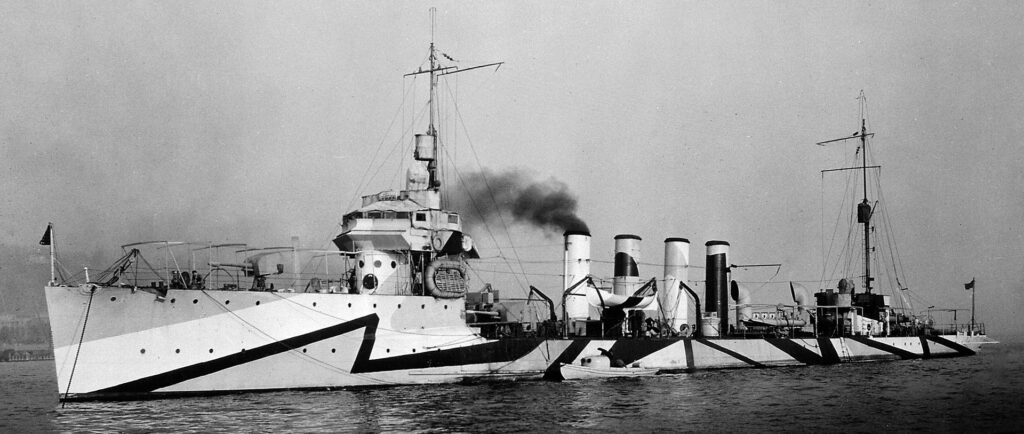
USS Henley (DD-39), HD photo
Henley was built at Fore River Ship and Engine, laid down 17 July 1911, launched 3 April 1912 and commissioned on 6 December 1912. After training and shakedown, she was assigned to the US Atlantic Torpedo Fleet based in Newport, Rhode Island alternating between the Caribbean to North Atlantic. On 22 April 1914, she was part of the expedition off Tampico, Mexico, protecting citizens and
interests during the revolution, also transporting refugees and supplies. From 1915, she was in Neutrality Patrol, also inspecting belligerent ships in American ports.
From April 1917, she patrolled and escort fuel ships assisting destroyers with the first troop convoy on 13 June. She never ventured to Europe and stayed until the end of the war in convoy duty along the east coast and in between ASW patrols off New York harbor. She was sent in Philadelphia Navy Yard, decommissioned on 12 December 1919. She served with the Coast Guard on 16 May 1924, from Stapleton, New York and New London, Connecticut, returned to the USN on 8 May 1931, stricken and sold for BU.
 Beale DD-40
Beale DD-40
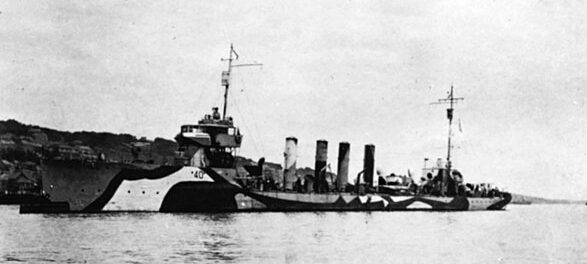
USS Beale was built at William Cramp & Sons, laid down on 8 May 1911, launched 30 April 1912 and commissioned 30 August 1912. After training and shakedown she joined the 5th Group of the Atlantic Torpedo Flotilla, with the same training and operational area. She was placed in reserve on 13 December 1915, reactivated on 5 January 1916 for Neutrality Patrols along the Atlantic coast. In full commission from 22 March 1917 she was prepared for overseas service and sailed to Queenstown on 5 February 1918. Alternating convoy and patrol duties until November, she onlt returned to the US in December, and served with the Atlantic Fleet until placed in reserve at Philadelphia NyD, 25 October 1919. Reactivated in 1924 to serve with the Coast Guard on 28 April she was tasked to enforce the Volstead Act (prohibition), assigned hull number CG-9 and returned to the USN on 18 October 1930, scrapped in 1934.
 Jouett DD-41
Jouett DD-41
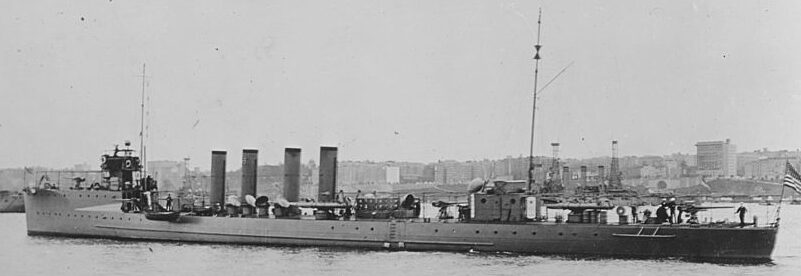
Jouett was built at Bath Iron Works, laid down on 7 March 1911, launched 15 April 1912, commissioned on 24 May 1912 with Lt.Cdr W. P. Cronan in command. She served with the Atlantic Fleet Torpedo Flotilla on the East Coast until early 1914, then took part in the expedition to Tampico, Mexico during the revolution. She supported the Marines at Veracruz on 21 April 1914. Back to the east coast in 1915-16 she resumed her peacetime training and neutrality patrols. In April 1917 she patrolled the Delaware Bay. In August she was prepared in New York and departed on the 8th to escort five troopships bound for France. Back in the US she was based in New London, Connecticut, on 15 January 1918 experimentating with new ASW detection devices until 4 June, and leading her own anti-submarine hunter-killer group along the East Coast until the end of the war.
After 1919 exercizes and fleet maneuvers she was deactivated in Philadelphia Navy Yard on 20 July 1919, decommissioned on 24 November, then recommissioned with the US Coast Guard on 23 April 1924. Back to the Navy on 22 May 1931, she was stricken and sold for scrap.
 Jenkins DD-42
Jenkins DD-42
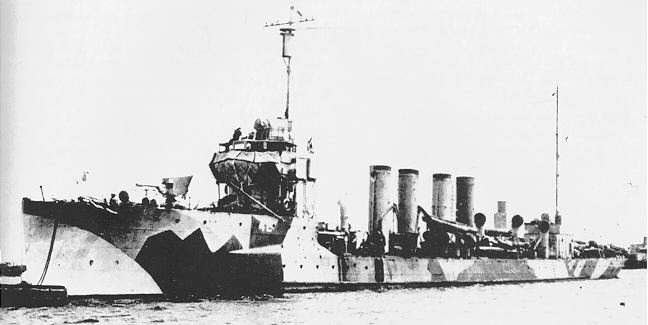
USS Jenkins was built in Bath Iron Works, laid down on 24 March 1911, launched 29 April 1912, comm. 15 June 1912. She was part of the Torpedo Force, Atlantic, based at Newport, Rhode Island. her operating area extended from the Caribbean in the winter to the East Coast, up to Cape Cod in the summer. She was detached in 1914 to take part in the Tampico expedition in Mexico and the occupation of Veracruz. On 1 October 1916 while in neutrality patrols she collided with the lighter Trilby at Sandwich (Massachusetts) only having light damage.
She went on in ASW patrols and maneuvers until prepared to serve in Europe, sailing on 26 May 1917. Based at Queenstown, she patrolled the eastern Atlantic and made several submarine contacts but sunk none. After the Armistice she waited until December for escorting home-bound convoys and was back in Boston on 3 January 1919. Inactivated in Philadelphia, Pennsylvania on 20 July, decommissioned on 31 October she was never reactivated and stricke, sold for BU in 1935.


 Latest Facebook Entry -
Latest Facebook Entry -  X(Tweeter) Naval Encyclopedia's deck archive
X(Tweeter) Naval Encyclopedia's deck archive Instagram (@navalencyc)
Instagram (@navalencyc)





 French Navy
French Navy Royal Navy
Royal Navy Russian Navy
Russian Navy Armada Espanola
Armada Espanola Austrian Navy
Austrian Navy K.u.K. Kriegsmarine
K.u.K. Kriegsmarine Dansk Marine
Dansk Marine Nautiko Hellenon
Nautiko Hellenon Koninklije Marine 1870
Koninklije Marine 1870 Marinha do Brasil
Marinha do Brasil Osmanlı Donanması
Osmanlı Donanması Marina Do Peru
Marina Do Peru Marinha do Portugal
Marinha do Portugal Regia Marina 1870
Regia Marina 1870 Nihhon Kaigun 1870
Nihhon Kaigun 1870 Preußische Marine 1870
Preußische Marine 1870 Russkiy Flot 1870
Russkiy Flot 1870 Svenska marinen
Svenska marinen Søværnet
Søværnet Union Navy
Union Navy Confederate Navy
Confederate Navy Armada de Argentina
Armada de Argentina Imperial Chinese Navy
Imperial Chinese Navy Marinha do Portugal
Marinha do Portugal Mexico
Mexico Kaiserliche Marine
Kaiserliche Marine 1898 US Navy
1898 US Navy Sovietskiy Flot
Sovietskiy Flot Royal Canadian Navy
Royal Canadian Navy Royal Australian Navy
Royal Australian Navy RNZN Fleet
RNZN Fleet Chinese Navy 1937
Chinese Navy 1937 Kriegsmarine
Kriegsmarine Chilean Navy
Chilean Navy Danish Navy
Danish Navy Finnish Navy
Finnish Navy Hellenic Navy
Hellenic Navy Polish Navy
Polish Navy Romanian Navy
Romanian Navy Turkish Navy
Turkish Navy Royal Yugoslav Navy
Royal Yugoslav Navy Royal Thai Navy
Royal Thai Navy Minor Navies
Minor Navies Albania
Albania Austria
Austria Belgium
Belgium Columbia
Columbia Costa Rica
Costa Rica Cuba
Cuba Czechoslovakia
Czechoslovakia Dominican Republic
Dominican Republic Haiti
Haiti Hungary
Hungary Honduras
Honduras Estonia
Estonia Iceland
Iceland Eire
Eire Equador
Equador Iran
Iran Iraq
Iraq Latvia
Latvia Liberia
Liberia Lithuania
Lithuania Mandchukuo
Mandchukuo Morocco
Morocco Nicaragua
Nicaragua Persia
Persia San Salvador
San Salvador Sarawak
Sarawak Uruguay
Uruguay Venezuela
Venezuela Zanzibar
Zanzibar Warsaw Pact Navies
Warsaw Pact Navies Bulgaria
Bulgaria Hungary
Hungary

 Bundesmarine
Bundesmarine Dutch Navy
Dutch Navy Hellenic Navy
Hellenic Navy Marina Militare
Marina Militare Yugoslav Navy
Yugoslav Navy Chinese Navy
Chinese Navy Indian Navy
Indian Navy Indonesian Navy
Indonesian Navy JMSDF
JMSDF North Korean Navy
North Korean Navy Pakistani Navy
Pakistani Navy Philippines Navy
Philippines Navy ROKN
ROKN Rep. of Singapore Navy
Rep. of Singapore Navy Taiwanese Navy
Taiwanese Navy IDF Navy
IDF Navy Saudi Navy
Saudi Navy Royal New Zealand Navy
Royal New Zealand Navy Egyptian Navy
Egyptian Navy South African Navy
South African Navy






























 Ukrainian Navy
Ukrainian Navy dbodesign
dbodesign